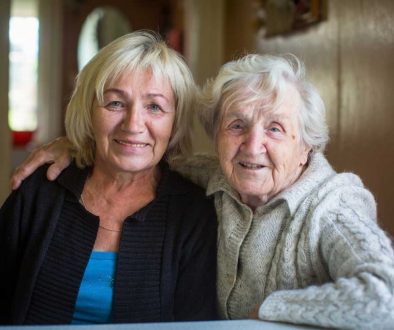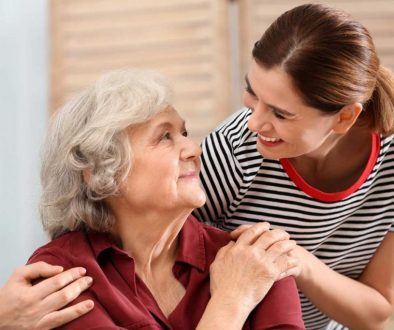Is Hospice for the Dying Only?
Yes.
And no.
It’s one of the most common questions we hear: “Is Hospice for the Dying Only?” It’s an important question because it centers around what hospice is. While the initial answer may seem obvious, it does require a bit of explanation.
Hospice Care Begins When Treatment Ends
You see, hospice helps those with serious illnesses (like heart failure) who have six months or less to live. It enables them to receive hospice care in their home or wherever they call home.
Hospice focuses on providing medications and care to manage the symptoms, not treat or cure the disease. Hospice care team members include not only doctors and nurses, but social workers and chaplains.
The goal is to care for the whole person, and this includes pointing the patient in the direction of needed resources and providing spiritual care and support.
In that sense, yes, hospice is only for those who are dying.
You cannot have hospice care if you are still seeking treatment for your disease. This is called curative treatment. Hospice only begins when curative treatment has stopped.
But in another sense, hospice cares for the patient’s entire family through including grief counseling, bereavement care, and other services.
When you consider that the hospice patient is not the only one who benefits from compassionate care, then you could say hospice also helps the patient’s family.
5 Ways Hospice Helps Family Members
We’ll take a look at five important ways that hospice organizations can help family members.
1. Providing access to resources
Do you know who is paying for hospice care? Fortunately, most insurance companies, as well as Medicare and Medicaid, provide some sort of hospice benefit. However, when you’re going through the stress and uncertainty that happens when a loved one is dying, reading through detailed documentation can be challenging at best.
This is why hospice teams help by providing access to resources and giving advice that can help you. The social workers on these teams can assist you when you apply for Medicare, Medicaid and even benefits from the Veteran’s Administration.
2. Assisting with memorial services
Hospice workers can assist family members and patients with making funeral arrangements. By providing this help and support, it allows the family members a chance to start processing their grief.
3. Providing spiritual counseling
The chaplains on the care team can provide counseling for the patient and his or her family as they go through this challenging transition.
4. Giving caregivers a break
Specially trained volunteers are an important part of the hospice team. They are available to visit with the hospice patient in order to provide support and companionship. This gives caregivers and family members a break. This break gives them free time to run errands, complete paperwork, or just simply have a chance to rest.
5. Providing bereavement services
The weeks and months leading up to the loss of a loved one are emotionally draining and demanding. Hospice teams specialize in bereavement support, providing access to grief counseling and even local support groups. There are often special programs geared toward helping children who have lost a parent.
While Hospice Care is For the Dying, the Family Also Benefits
In the strictest sense, hospice care is only for the dying. Hospice care begins only when all medical treatment has ended and there is no chance for a recovery from the illness.
However, hospice workers understand that caring for a patient means providing resources, support and relief for the entire family.
In that sense, everyone in the family benefits from hospice care.
Do You Have Other Questions About Hospice?
We discovered that people have a lot of questions about hospice, and they are not sure about where to find the answers.
As a result, many of them believe hospice myths and misconceptions. These falsehoods may keep them from seeking the care they need or helping someone they love obtain hospice services.
Want to know more? We’ll give you the answers to some of the most common hospice questions delivered straight into your inbox when you sign up. Simply provide us your email in the box below and you’ll receive a series of easy-to-understand emails that answer the most commons questions we’re asked about hospice.












